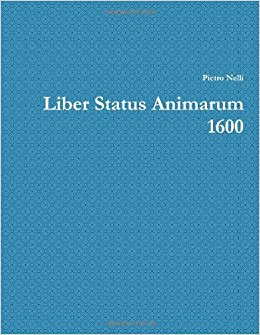Books over the centuries have taken many forms. Indeed some kinds of books do not have to have any narrative to be most revealing. I came across one of these a little while ago in an Oxfam shop, a green cloth-bound item for which I see I paid 39 cents.
The title page revealed that it was a Liber Status Animarum – ‘The Book of the Status of Souls’, designed for use in a Catholic parochial district. It was printed sometime in the middle of the last century by E. J. Dwyer, Catholic Bookseller and Publisher, in Sydney and Brisbane.
Though there are pages for an alphabetical list of names and of streets, it is essentially a book of forms, three to an opening, on which the priest of the parish assigned a particular district would filled up the names of the parents and other adults, with side columns to note their age, their Baptism, first Communion, and Confirmation, as well as their attendance at Mass and the sacraments, and what school they went to. The opposite pages were for the children of the family, along the same lines recording the details of their religious life.
The book was designed to hold the most intimate details of 573 families, well over 5,000 persons.
At the front is a list of directions. Seven are in English. The last is in Latin, as it was not intended to be read by anyone except the parish clergy. The Latin was used to conceal the meaning of the indications to be used to define the moral qualities of all these people, such things as the dubious nature of the childrens’ Baptisms, poor attendance at Mass and so on.
I had never heard of such a book. But a little research revealed that parish family books were prescribed in the Rituale Romano published in 1614 by Pope Paul V. On asking a friend who is a long-standing parish priest, I got an explanation of how it had been used.
Such books existed in every parish in Ireland, certainly since the church rules became more strongly applied after the Synod of Thurles in 1850. He recalled that they were punctiliously kept in the Diocese of Dublin down to the time of Archbishop McQuaid (pictured).
On a visitation, Dr McQuaid nearly always asked to see the Liber Status Animarum when he inspected the other parish record books, the public ones, for marriage and baptism. He was a strict man and sternly deprecated the use of biros in the filling up of parish forms.
Details
From my own childhood I cannot recall a priest ever calling to collect such details in Rathmines, a parish with a large Protestant population. But even in the 1950s, clergy born in Dublin were more timorous than country born-priests about knocking on doors to collect the details.
My friend tells me that he never minded knocking on all the doors in his district, and he found Protestants quite welcoming (although their details would not have been recorded unless they lived with a Catholic).
What became of these books? My friend says that strict charge was kept of them, and as they became outdated they were destroyed by burning. This is understandable, as the information was of the most sensitive kind. If they had fallen into the hands of others there could have been a grave scandal.
Many of these books from the 17th Century or so survive in Eastern Europe. But in these Atlantic Islands there is only one extant, contained in the records of the Catholic parish of Cowpen St Cuthbert in Northumberland, dating from 1936, in the Northumberland Archives. None survive, so far as I can ascertain, in Ireland.
For the historian, unfazed by outdated threats of libel, such books if they survived in Ireland would be a treasure trove of social details, the sort of information that would have delighted French historians of the Annales school. Just think how details from a parish book combined with information from the census returns from 1901 and 1911 would transform our knowledge of the intimate lives of Irish Catholics in the last century.


 Peter Costello
Peter Costello
